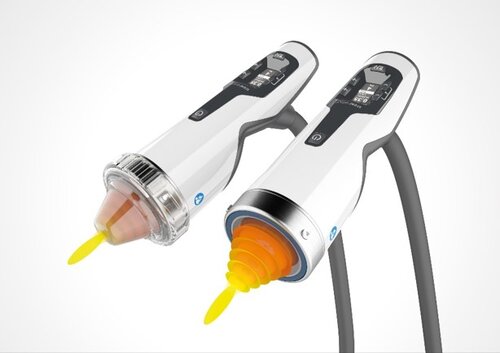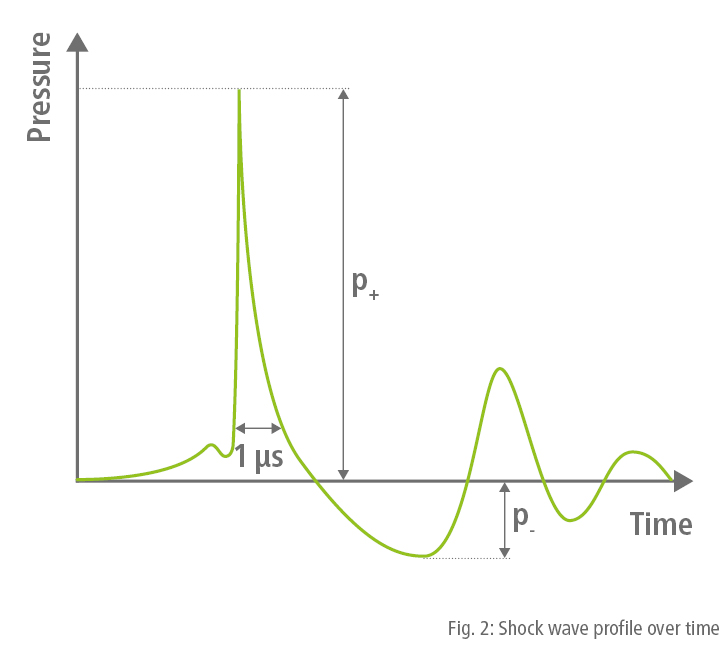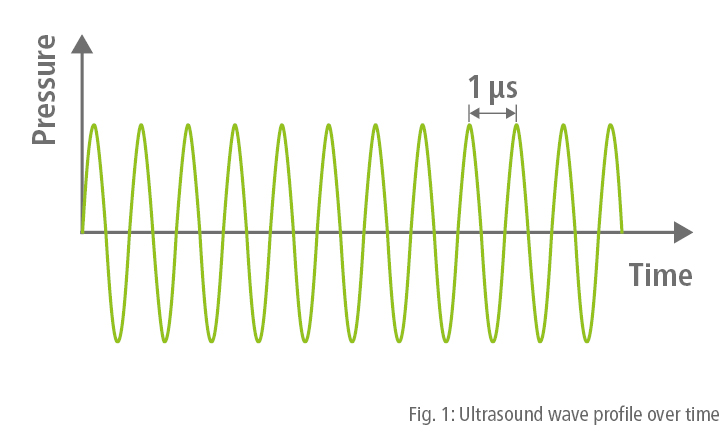Extracorporeal shockwave therapy. It’s a hugely popular treatment for a wide array of medical conditions, but how sure are we that shockwave therapy works? Here we discuss what shockwave therapy is, how it works, what it can treat, and what evidence there is for its effectiveness. Whether you are interested in providing shockwave in your clinic or having the treatment provided yourself, you should find all of the information you need to know here.
What is shockwave therapy?
Shockwave therapy is a treatment which involves passing high-frequency acoustic pulses through the skin and into soft tissue or bone. It is a non-invasive technique, often used as an alternative to surgery, which can be used to treat a phenomenally wide range of conditions from plantar fasciitis to bone fractures and even erectile dysfunction.
Shockwaves were first investigated by German and Ukranian researchers in the 1970s, who discovered that acoustic pressure disturbances (called shockwaves) could be turned into mechanical energy. They used these shockwaves in a new medical technique called lithotripsy, which involved using these shockwaves to break up kidney stones without the need for surgery. Once they were broken into smaller fragments, the patient would be able to pass them painlessly.
Later in the 1980s, practitioners using shockwaves to break up kidney stones noticed a secondary result. Bones close to the treatment site were seeing an increase in mineral density. Because of this, researchers began to look into its applications in orthopaedics, which led to its use first in bone fracture healing. Over the coming decades came many more discoveries of its effects and the full potential for therapeutic use that it holds today.

How are shockwaves generated?
Specialist shockwave therapy machines are used to generate the shockwaves. This can be done in a few different ways depending on the type of shockwave and machine.
Radial shockwaves, also called radial pressure waves, are usually created pneumatically. Pressure built up by compressed air or gas is used to push an element of the device into another at a very high speed. The collision of the two elements creates the shockwave over the patient’s skin, which can be heard as an audible click. This is then repeated at a high rate.
Radial shockwaves are the original type of shockwave used in orthopaedics. The radial shockwaves are strongest at their source and disperse as they are directed into the tissue. They have a maximum penetrating depth of 50mm, and so are usually used to treat shallow or superficial injuries.
Focused shockwaves, a newer technology, are generated by electrohydraulic, piezoelectric or electromagnetic shock wave generators. Storz Medical’s Duolith range produces focused shockwaves using an electromagnetic cylindrical coil combined with a reflector in the form of a rotation paraboloid to focus the shockwaves.
This provides a very accurate focal zone in both depth and laterally and due to the comparatively large aperture of the shockwave source relative to the focus size, the wave can be introduced the the body over a large coupling area, reducing pain to an almost unnoticeable amount. Focused shockwaves are used for conditions which require a deeper treatment depth or stronger shockwaves. It also typically requires less sessions to see an effective result and is better at treating chronic conditions.
How does shockwave therapy work?
Whether radial or focused, the shockwaves are emitted by the handpiece attached to the shockwave machine, and pass through the skin into the affected tissue. The momentum of these waves create slight movements in the cells they pass, stretching and deforming them and temporarily increasing their permeability to ions and certain molecules. Substances such as nitric oxide (a vasodilator) and substance P (a growth factor and pain moderator) are also released, among other beneficial chemicals.
Shockwaves’ therapeutic effect mostly comes from increases in blood circulation in the tissue, meaning more substances involved in repair can be delivered to the affected site, as well as enhanced metabolic activity, leading to the onset of the healing process.
As demonstrated by expensive peer-reviewed research, shockwave therapy is responsible for the following effects:
Increase in cell permeability 1
Release of substance P 4
Reduction of non-myelinated nerve fibres 5
Antibacterial effect 8
What is the difference between shockwave and ultrasound?
Ultrasound waves and shockwaves are similar, but have one vital difference. Shockwaves have a substantially higher pressure amplitude than ultrasound waves. Ultrasound waves are oscillating waves within a narrow bandwidth, but shockwaves involve one large positive pulse, followed by much smaller waves. Because ultrasound exerts a high-frequency alternating load, at high amplitudes this can lead to heating, tissue tears and cavitation. Shockwaves avoid these adverse effects.


Is shockwave effective?
Shockwave therapy has both NICE guidance and FDA approval for a large number of indications. Shockwave therapy delivered by qualified therapists is largely risk and side-effect-free, making it a safe treatment choice for musculoskeletal conditions and chronic pain. Shockwave therapy is a highly trusted treatment modality, and is used by hundreds of private clinics and NHS hospitals across the UK.
What kind of conditions can shockwave treat?
Shockwave therapy has been shown to effectively treat many conditions including:
The conditions and research listed here represent only the tip of the iceberg. Over 3000 papers have so far been published on shockwave therapy and new treatments are being investigated regularly.




